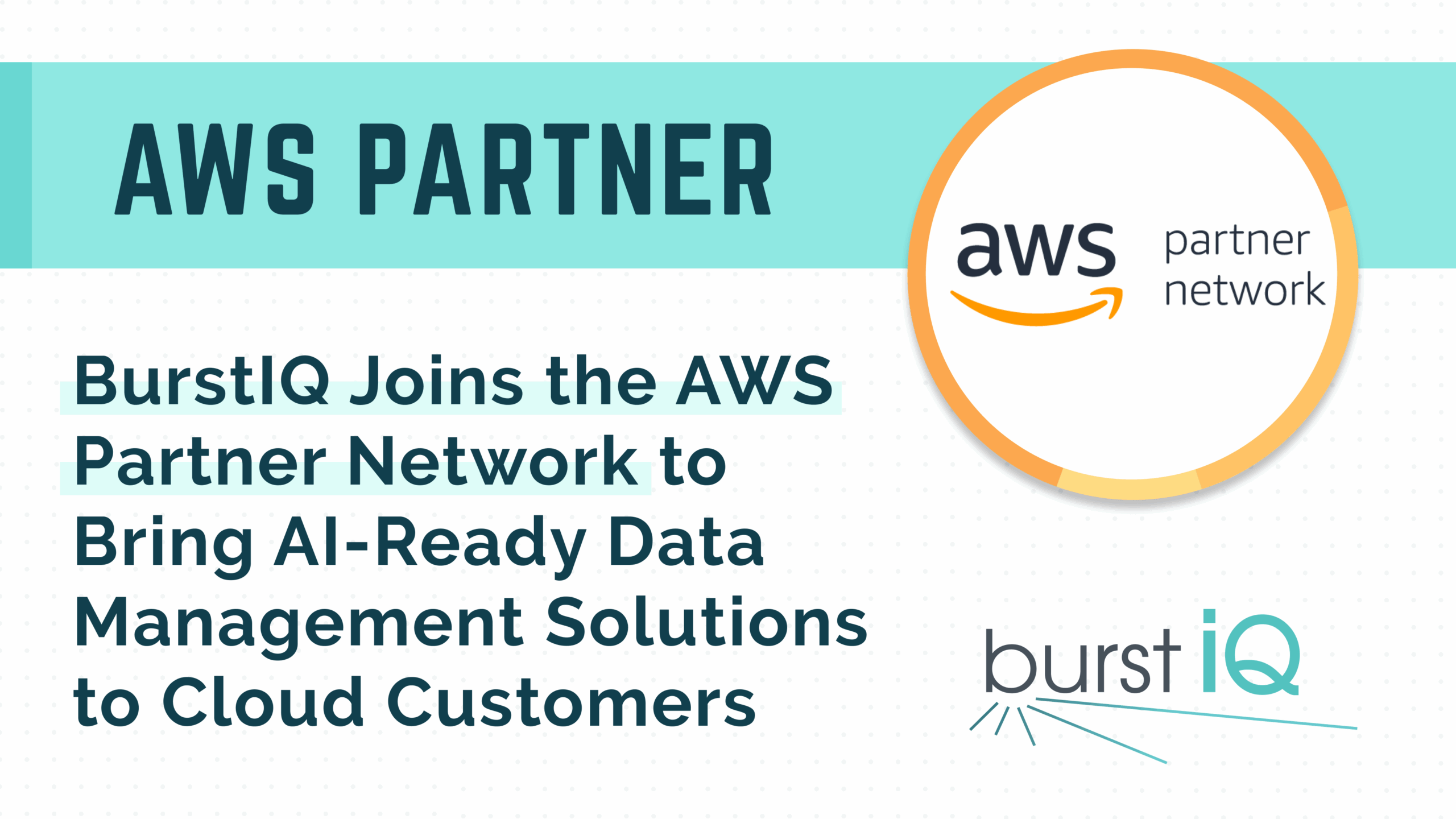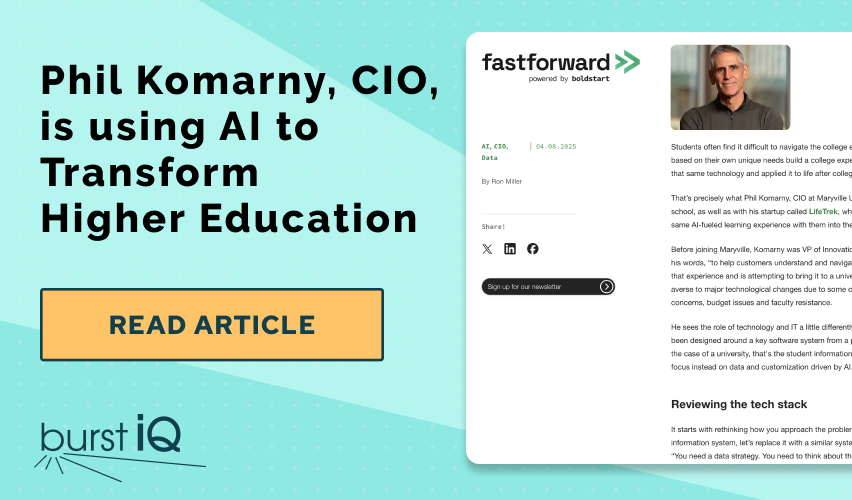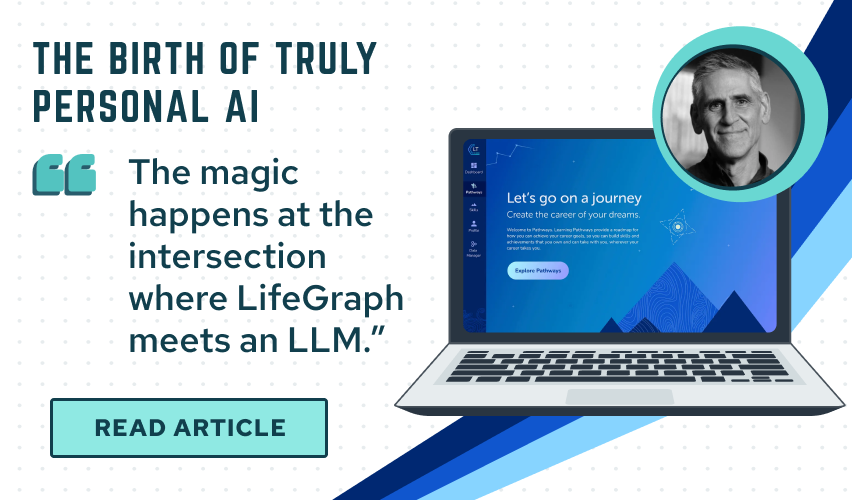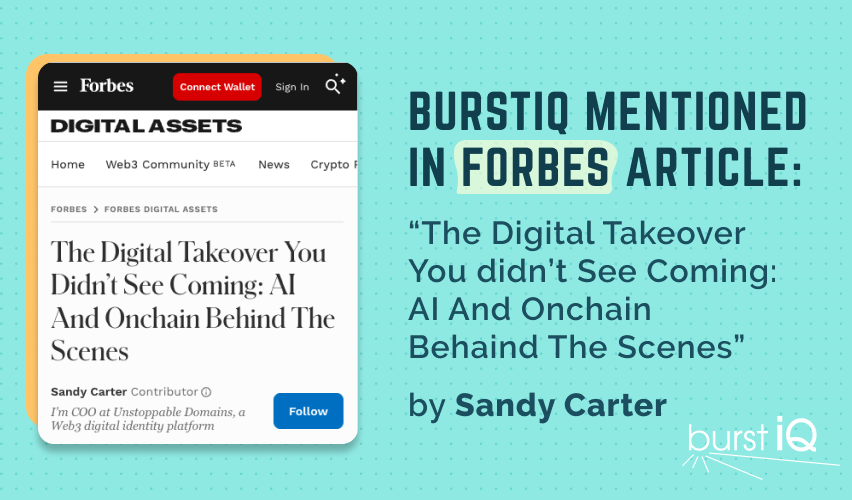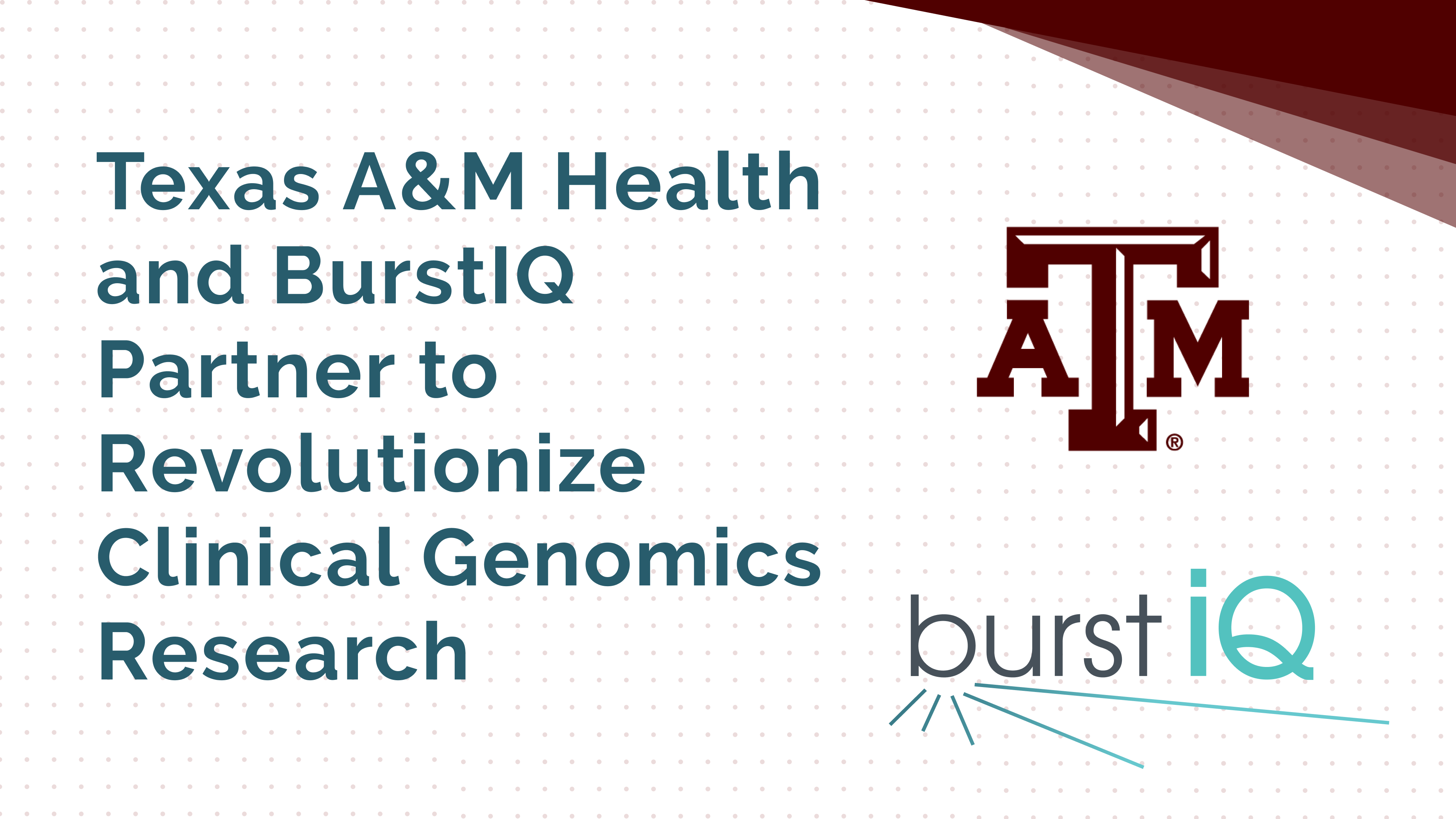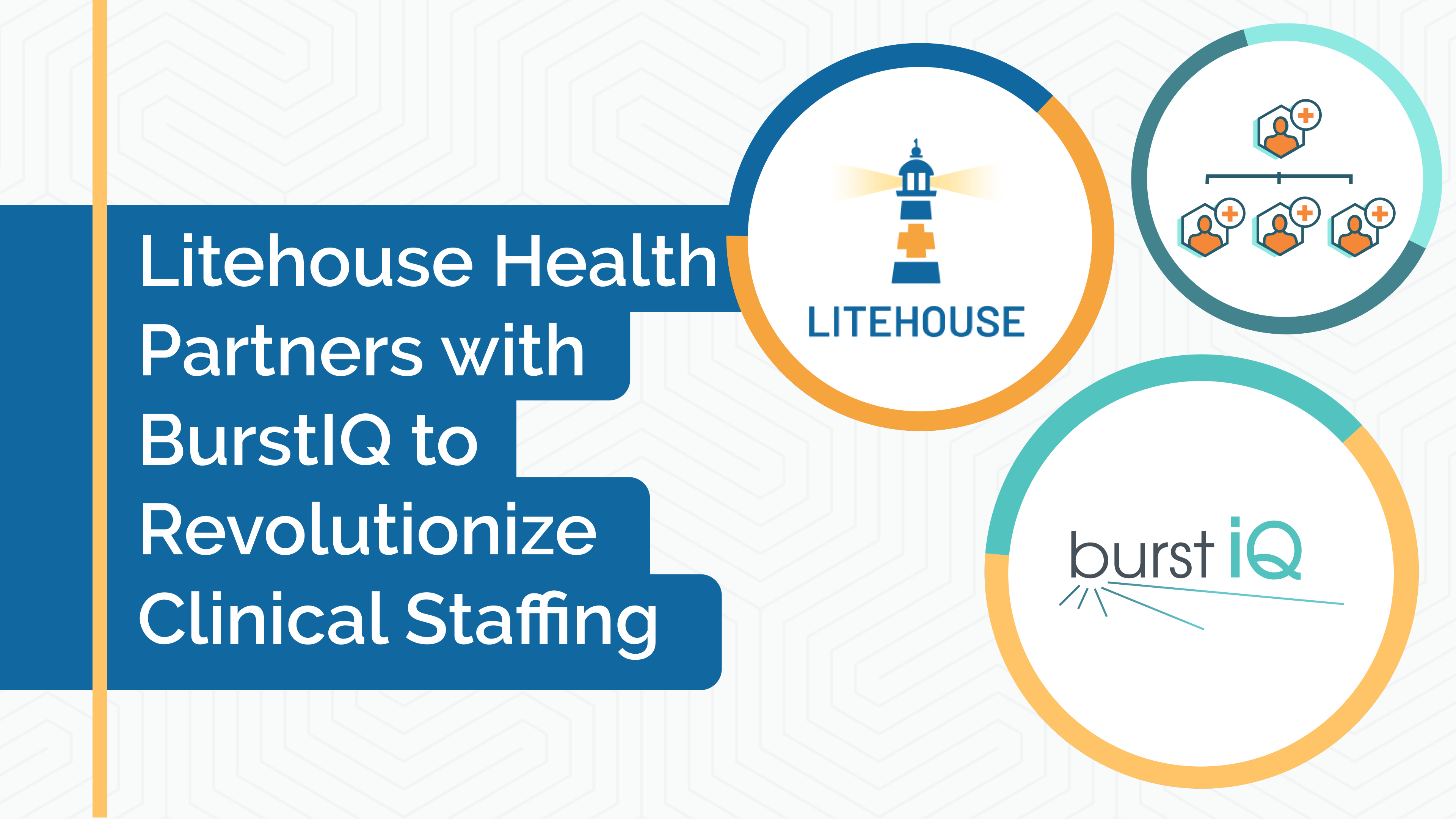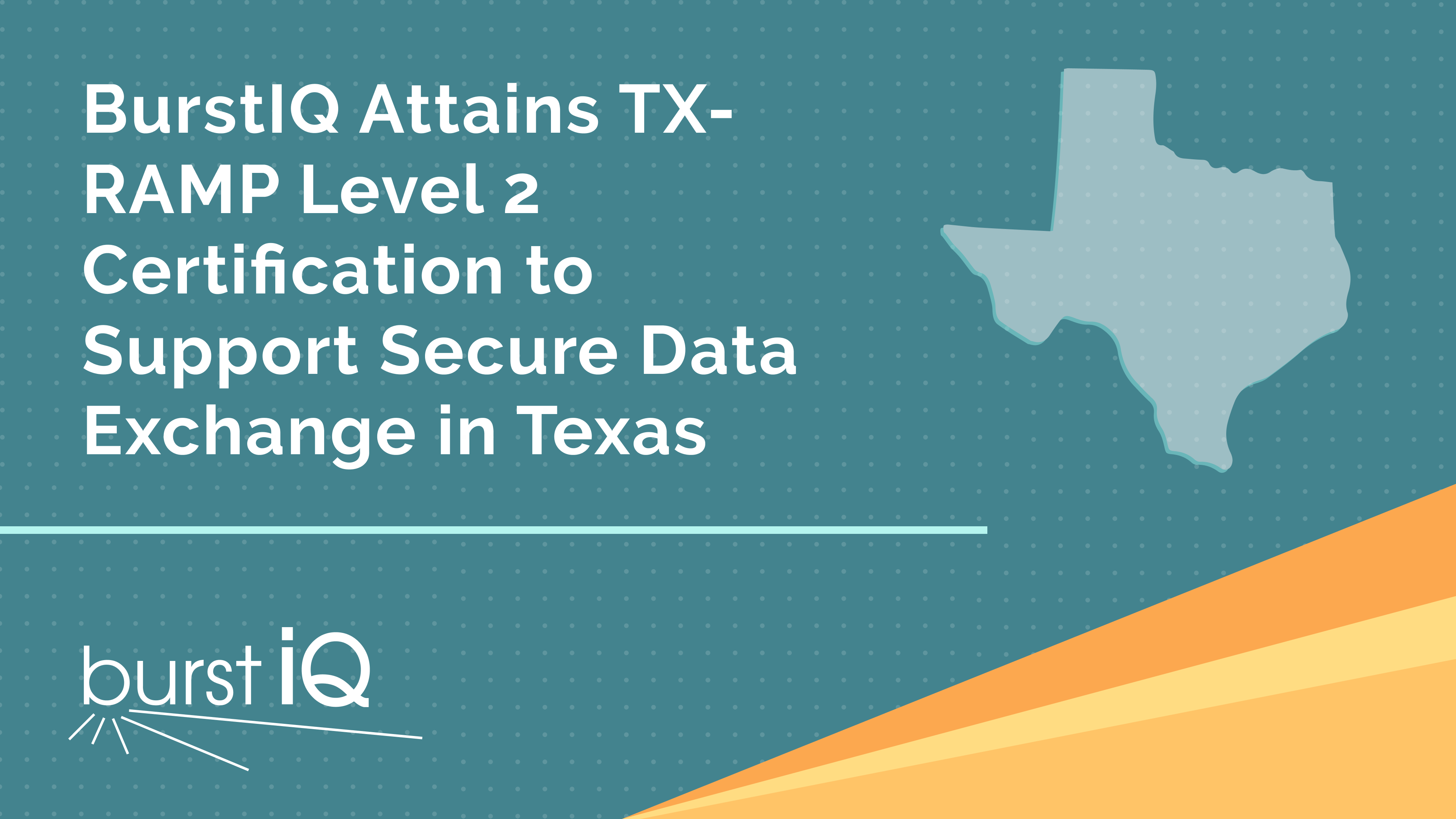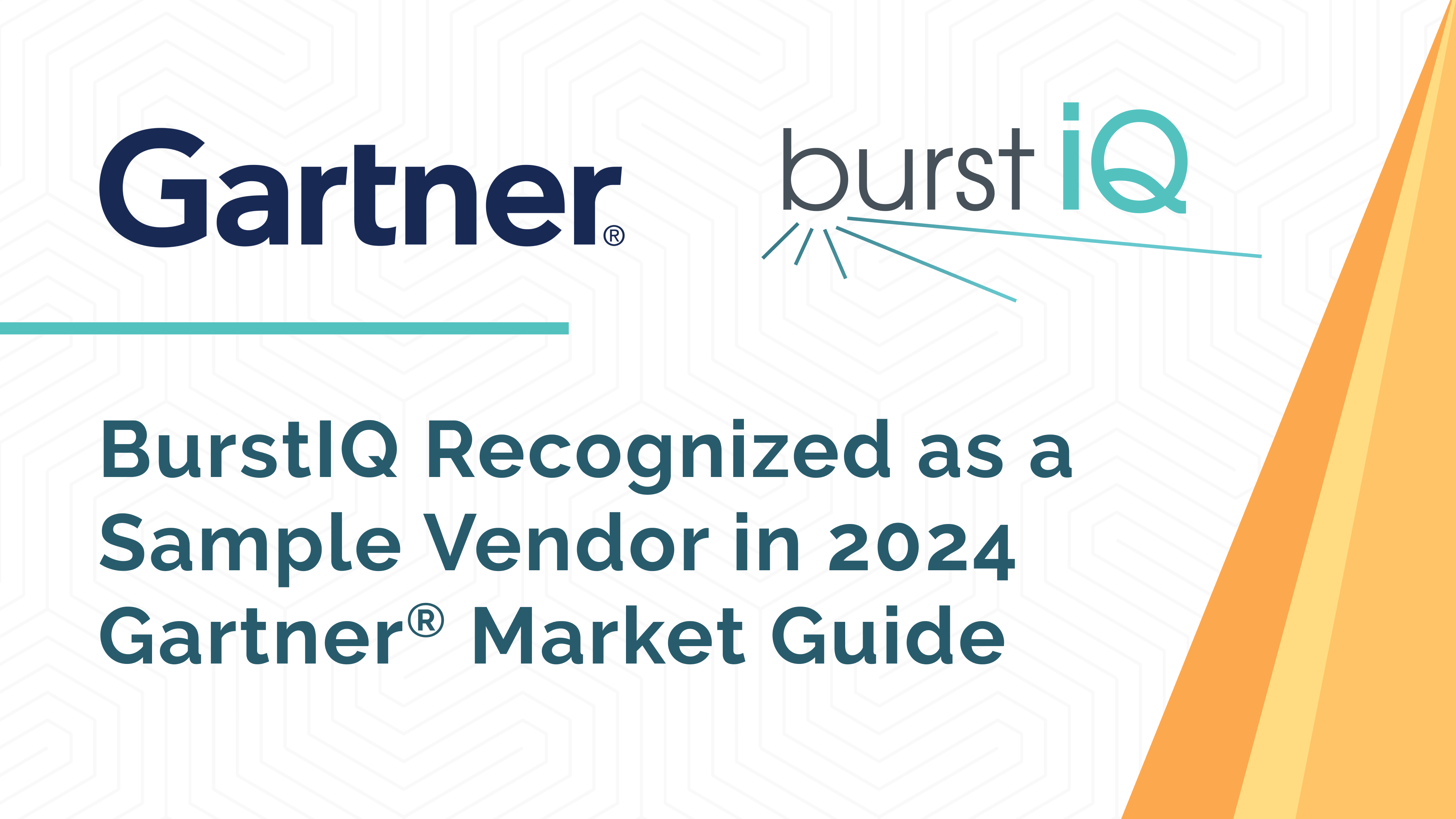BurstIQ: Cultivating Experiences from Inspiration
Since its inception in 2015, BurstIQ has built a strong reputation in the healthcare industry as the leading provider for data management solutions. In 2017, BurstIQ launched its own platform: a secure, blockchain-enabled solution designed to simplify how companies leverage data ownership, consent, governance, compliance, connectivity, and intelligence. Now, nearly five years later, that same platform has evolved into a global secure network, the LifeGraph® Network, accompanied by the goal of enabling connectability of organizations worldwide. This evolution was welcomed when the COVID-19 pandemic began to change the approach to patient care from a more hospital and clinic centered approach, to a more person-centric approach, requiring security and data ownership to navigate into uncharted territories.
A Rapid Response to a Global Threat
Almost overnight, the COVID-19 pandemic thrust unparalleled burdens on modern healthcare systems, and demanded an unprecedented level of adaptability. The industry and its regulators responded with remarkable resilience, rearranging priorities in real-time to accommodate critical needs for telemedicine, coordination of staff and bed capacity, mass-scale testing and vaccine infrastructure, and more.
As the pandemic unfolded, BurstIQ found itself in a unique position. Healthcare providers and researchers were finding it difficult to quickly share patient data with each other, slowing the pace of research that was needed to identify causes, risk factors, and treatments. As a leader in providing secure data exchange solutions for sensitive health data, BurstIQ already had all of the HIPAA-compliant infrastructure needed to allow doctors, researchers, pharmaceutical companies, and technology partners to share patient-level COVID-19 data. So, BurstIQ mobilized its team to quickly build a collaborative research platform on top of the company’s infrastructure. The platform allowed researchers to quickly and easily share data with each other━both de-identified and identifiable data━while maintaining regulatory compliance, and without needing to set up traditional data connections. This was the genesis of Research Foundry.
Over the following months, Research Foundry grew into a global community of over 200 researchers, doctors, developers, and enterprises ━all dedicated to discovering and building the next generation of healthcare through collaboration.
Moving to the Edge
The user-friendly tools that BurstIQ introduced with Research Foundry allowed the company to advance the enterprise SaaS platform into a full global network, the LifeGraph® Network. With LifeGraph Network, BurstIQ solves two of the most significant and intractable technology trends in the world: first, how to seamlessly connect information across people, devices, solutions, companies, and even countries, and do it in a way that enforces the web of regulations that apply to data in various ways. And second, how to make all this data accessible to AI and other intelligence tools without needing to consolidate or restructure it, which would risk violating the integrity of the data and privacy rights of the owner.
This really hit home for BurstIQ when the company looked at it through the lens of what’s happening in the broader digital landscape. According to Business Insider, the number of mobile phones, wearable devices, and other connected devices is expected to exceed 40 billion by 2027[1]. And advancements in chip technology mean these IoT devices aren’t just dumb devices anymore; they are complex data processing machines that harvest, analyze, and send massive amounts of data in real-time. IoT devices capture data about movements, behavior patterns, insulin levels, and even heartbeats. IoT devices aren’t monitoring patients from hospitals and clinics; they’re in their hands, homes, and bodies. In other words, the growth of IoT is shifting data and computing from centralized models to the edge.
Even regulations are moving to the edge. The General Data Protection Regulation (GDPR) and other GDPR-like regulations require companies to provide people with direct data ownership and control. This is forcing a reckoning with companies that have invested millions, even billions, in infrastructures that operate on the premise that the company owns and controls people’s data, not people themselves.
The bottom line is that data, computing power, ownership, and control are all moving from a centralized model to an edge-based model. Instead of needing to connect a few big systems and manage a few data access roles, organizations now need to connect millions of devices, applications, and users ━each with a different, and constantly changing, set of data access rights.
The healthcare and life sciences industries are clamoring to figure out how to solve this problem so they can engage with people at a more personal level and help them live healthier lives. But getting access to all this diverse data and applying intelligence to it, all while complying with an evolving landscape of data privacy laws, has been a massive challenge.
That’s exactly what LifeGraph® Network does.
“LifeGraph Network uses a very different approach to data security and management. We combine several different technologies, including blockchain, machine intelligence, and advanced data security methods, to transform data into smart data.” -Tyson Henry, CTO of BurstIQ and the architect of LifeGraph® Network
Smart Data: Data with Trust and Context
Tyson Henry, CTO of BurstIQ and the architect of LifeGraph® Network, shares a glimpse of the supporting technology. “LifeGraph Network uses a very different approach to data security and management,” he says. “We combine several different technologies, including blockchain, machine intelligence, and advanced data security methods, to transform data into smart data.”
Smart data is data that carries with it all of the context, auditability, access rights, and security that it needs to be trusted and used, no matter how that data moves or evolves over time. Information about who or what owns that data is built right into the data itself. That data owner can control who or what can access their data; they can revoke that access just as easily. Even if that data is added to EMRs, or immunization registries, or wellness apps on your phone, those ownership and access rights stay intact.
This is a significant departure from conventional approaches to data security. Rather than controlling data security using role-based access, which can easily be spoofed and can’t be enforced outside your own systems, smart data carries data security within each individual piece of data. “It is more secure and more flexible than traditional approaches to data security,” says Brian Jackson, COO of BurstIQ. He should know; he’s one of the most well-respected security specialists in the field and has performed security testing on some of the most tightly controlled data networks on the planet.
In addition to embedding data security into a piece of data, smart data embeds context. Everything that you need to understand the data is packaged up together into a single unit: where it came from, who created or modified it, whether or not it has been validated (and by whom), and how it is related to other data. This context adds layers of meaning and trust that traditional data models lack.
Smart data enables an entirely new approach to connecting and managing data; one that is more flexible, more secure, and more useful for AI and intelligence systems.
Building Smart Data into LifeGraphs
BurstIQ builds all this smart data into LifeGraphs®: multi-dimensional and connected views of people, places, and things and how they relate to each other. “LifeGraphs are like a kaleidoscope,” says Mr. Henry. “You might focus on a cardiology patient and use LifeGraphs to personalize their medication adherence plan. But, then you might shift the focus to their bypass surgery, and use LifeGraphs to optimize those procedures. It’s a much more useful way of using AI and intelligence, because LifeGraphs can find relationships and insights that we can’t find through conventional data analytics.”
When you combine that with the network capabilities of LifeGraph Network, this technology becomes really powerful. LifeGraphs bring together smart data from different owners, different devices, different applications, and even different locations. With LifeGraph Network, the deep intelligence Mr. Henry describes is possible across any data, anywhere, even data you don’t own or control… as long as the owner grants you access to it.
The implications of LifeGraph Network are profound. Now you can connect data around the world into a unified and contextualized view of a person, place, or thing, apply intelligence to that data without consolidating or restructuring it, and do all that while respecting the ownership, access rights, and compliance requirements of each piece of data.
Enabling Multi-Sided Marketplaces & Data Exchanges
The last several years have seen significant growth of 2-sided marketplaces and what we commonly refer to as “the sharing economy.” Airbnb and Uber are prime examples. Two-sided marketplaces are simply a specialized data exchange: producers and consumers must share some amount of information about themselves in order for the service to work (e.g., a rider shares their identity and location; the driver shares their location and license plate number).
A typical 2-sided marketplace.
In the healthcare and life sciences industries, 2-sided (and multi-sided) data exchanges take a slightly different form. Health information exchanges (HIEs), payer-to-payer data exchange consortiums, immunization registries, research networks, and benefit marketplaces are all examples of data exchanges. Health-related data exchanges have an added complication beyond their consumer peers: the data being shared is highly sensitive health and identity data━data that is subject to strict regulatory requirements.
The industry has typically managed health data exchanges using data warehouses and other hub-and-spoke models that centralize data ownership, control, and access management to a single entity. These centralized systems work reasonably well within a fixed network of users, endpoints, and partners. But as we’ve seen, everything is shifting to the edge. The volume and diversity of data, devices, endpoints, solutions, and regulations are growing. Business needs are changing at an accelerated rate. And centralized data systems are reaching their functional limit.
Amber Hartley has spent her career studying the intersection between healthcare, life sciences, and consumer tech. “The next generation of healthcare is far more fluid,” she says. “People want their healthcare experience to look more like the rest of their life. They want more choices, where and when they want them, and they want to opt in and out with a single click.” She adds that the need for fluidity isn’t limited to consumers: healthcare and life science enterprises want to launch new services in days, not months. Health professionals want to advance their skills online, on their schedule. And researchers want more collaboration without more red tape. All of these things require data exchanges that behave more like consumer marketplaces. Health data exchanges need to be much more flexible while still maintaining the highest standards of privacy and security.
LifeGraph® Network simplifies how organizations create and manage large-scale data exchanges and multi-sided marketplaces. It does this by bringing together all the tools to manage granular data ownership, governance, consent management, sharing, and process automation. It eliminates the need for tech-heavy and resource-intensive data systems, instead allowing companies to build exchanges that can automatically connect and disconnect endpoints, permission and de-permission users, and grant and revoke data access. It allows the exchange to manage data sharing from a single data point to petabyte-scale datasets, and from a single person to the whole world. This simplified approach to data exchanges makes it possible to build more flexible systems that can adapt to changing conditions, regulatory requirements, partnerships, data types, and users.
In short, LifeGraph® Network makes it possible for the health and life sciences industries to build the next generation of health.
SIDEBAR
Collaborative Research at the National Institutes of Health (NIH)
One example of a life sciences data exchange can be seen at the National Center for Advancing Translational Sciences (NCATS), a division of the National Institutes of Health (NIH). In May of 2021, BurstIQ and NCATS announced the results of a phase 1 pilot to develop a collaborative research network. For the pilot, NCATS integrated LifeGraph® Network with their computational infrastructure so researcher collaborators would be able to share data with each other while maintaining ownership and traceability of their contributions. This is critical for maintaining intellectual property rights. The goal of the pilot was to demonstrate that, by increasing researchers’ ability to quickly and confidently collaborate with each other, the collaborative research network could streamline the translational research process so that new treatments and cures can be delivered to patients faster.
Smart Data, Smart Experiences
BurstIQ’s market reach doesn’t end with data exchanges and 2-sided marketplaces. The company also engages with solution providers in the health and life sciences industries. As we noted earlier, the shift towards the edge corresponds with growth in new products and services that are designed to bring health services directly to people and give them more control over their health experience. Telemedicine allows people to connect with providers from the comfort of their home. Pharmaceutical companies are using digital therapeutics, or companion therapeutics, to stay engaged with people on their treatments. And a new wave of direct-to-consumer diagnostics and “omics” products are giving people more information about their health, without any physician involvement at all.
Health solutions are shifting to the edge, from hospital-centric to person-centric.
For these companies, LifeGraph® Network solves three key needs: customer trust, intelligence, and coordination.
First, because LifeGraph® enforces better data security, ownership, and control, it allows solution providers to not just say their products are trustworthy; it allows them to prove it. Second, as we mentioned before, LifeGraph® allows AI and machine intelligence tools to capture deeper context for how people, places, and things relate to each other. This additional layer enriches AI and other intelligence algorithms, so LifeGraph-enabled solutions are smarter ━their personalization is more personalized and their optimization is more optimized. Lastly, the network allows AI and AI-enabled solutions to leverage any data, anywhere, without needing to consolidate and reformat it. This is critical to the development of next-generation health solutions, where data is more distributed and aggregation is difficult or impossible. LifeGraph-enabled solutions can easily coordinate with other solutions, tap into additional data sources, and create more enriched experiences for their users.
A Bridge Between Exchanges and Experiences
As healthcare becomes more person-centric and person-powered, the lines between data exchanges and solutions are starting to blur. Health solution providers depend on marketplaces and partnerships to reach new users and build more connected and experience-rich products. Exchanges need compelling solutions to drive adoption and engagement. And users need both: the solutions that help them live their best life, and the means to discover and engage with those solutions.
LifeGraph® Network bridges the gap between solution providers, multi-sided data exchanges, people, and all the data shared between them. It allows health solutions to become smarter and reach more people by connecting with partners and exchanges. It allows exchanges to easily incorporate new services and increase consumer trust and engagement with those services. And it empowers people to access the tools they need to take greater control of their health experience.
LifeGraph® Network builds connections between data exchanges, solution providers, and people.
The Rising Tide
So where is BurstIQ headed next? The company is currently working with partners to launch specialized LifeGraph® Networks to address key market needs, with the goal of connecting people, solutions providers and marketplace operators, aligning incentives around a collaborative approach, and applying intelligence to make the system smarter. Three years ago, it could’ve been argued that the health and life sciences industries weren’t ready to collaborate. But COVID-19 has forced us all to confront a system that must become more collaborative, more flexible, and more intelligent. In 2021, these industries were not just ready, but clamoring for solutions like LifeGraph® Network.
“There’s an old saying, ‘a rising tide lifts all boats,’” says Frank Ricotta, CEO of BurstIQ. “That’s what collaboration does. Rather than benefiting just one company or person, collaboration lifts all boats. At BurstIQ, we’re not the boats; we’re the rising tide.”
Read the original blog on Stanford Medicine
